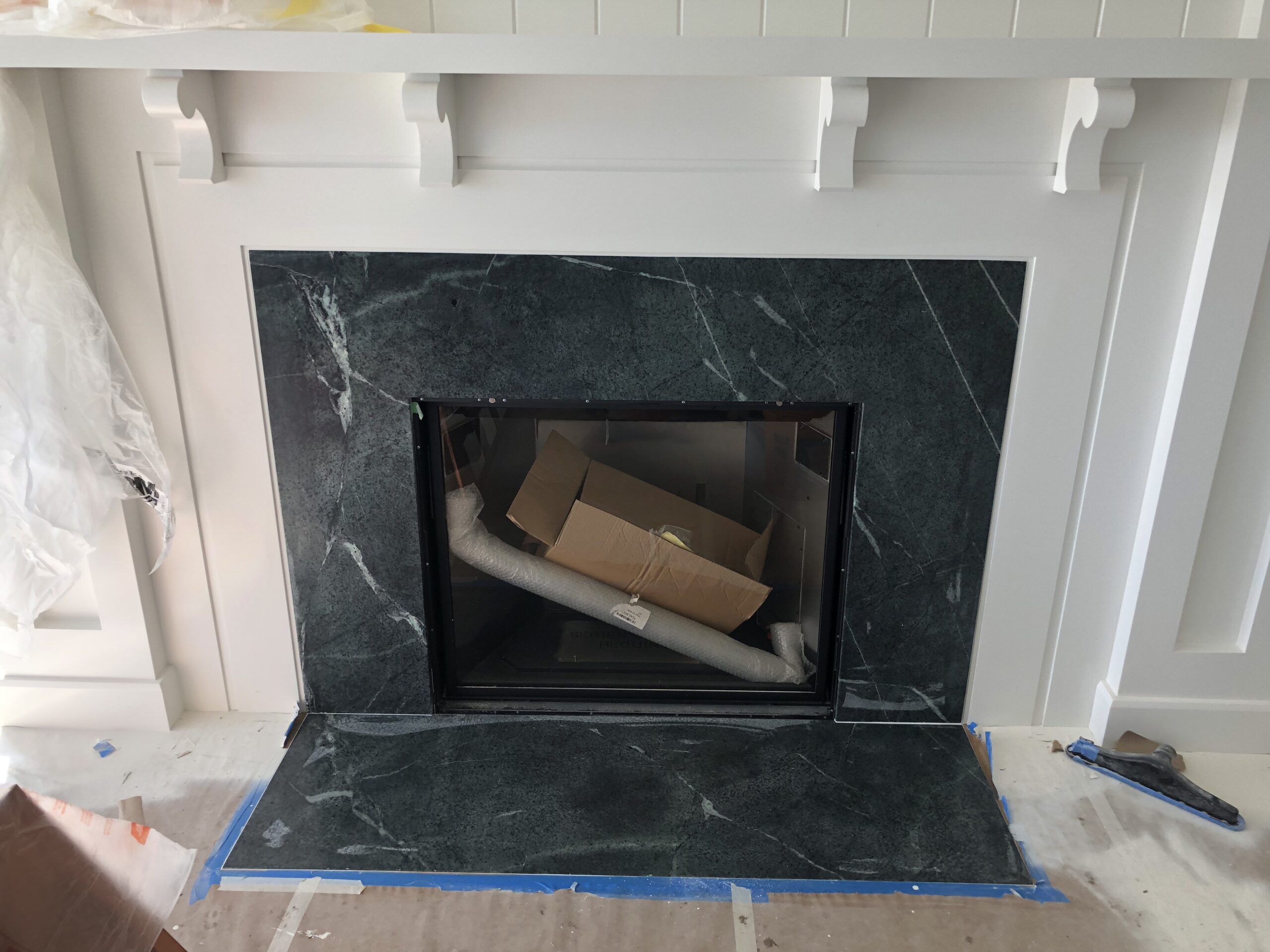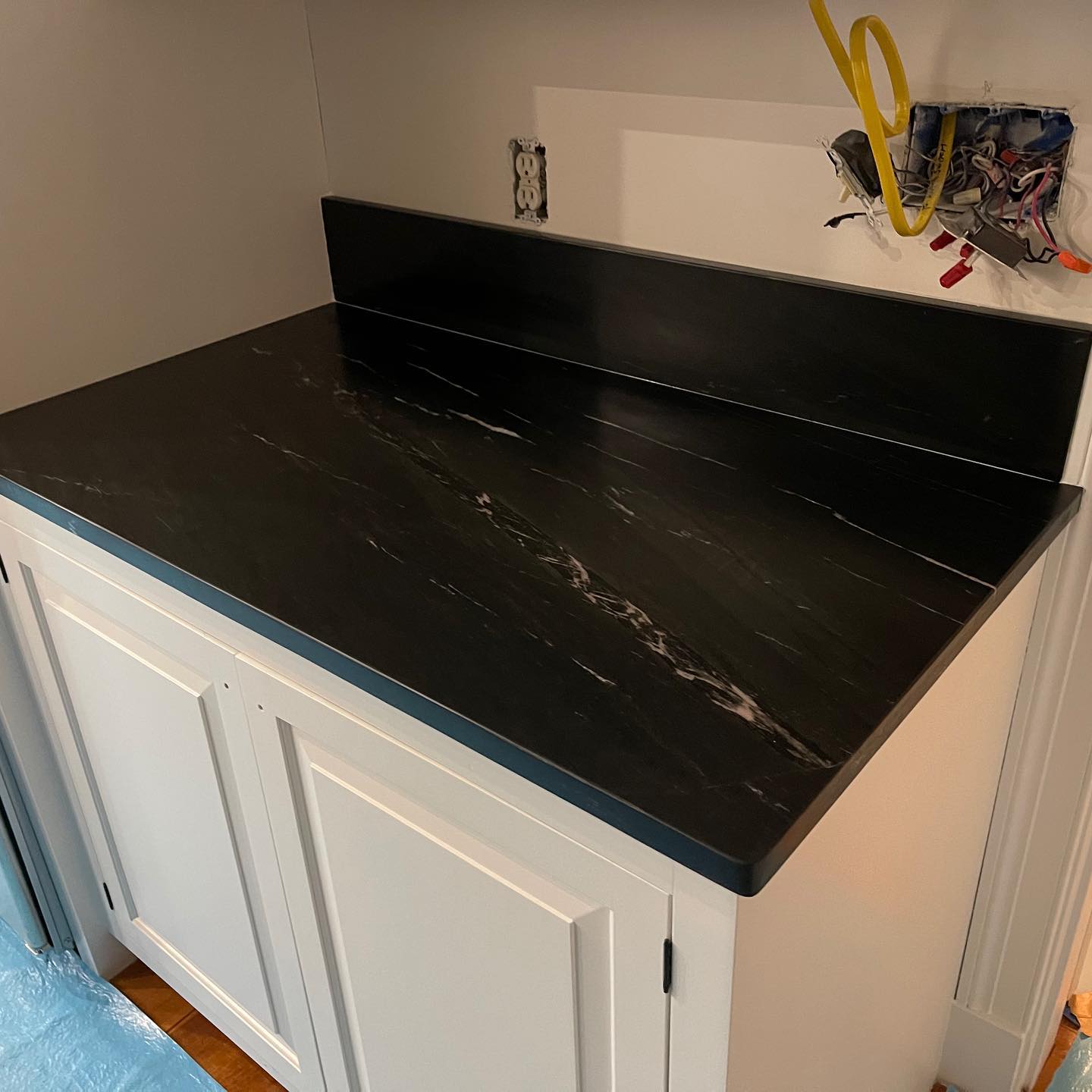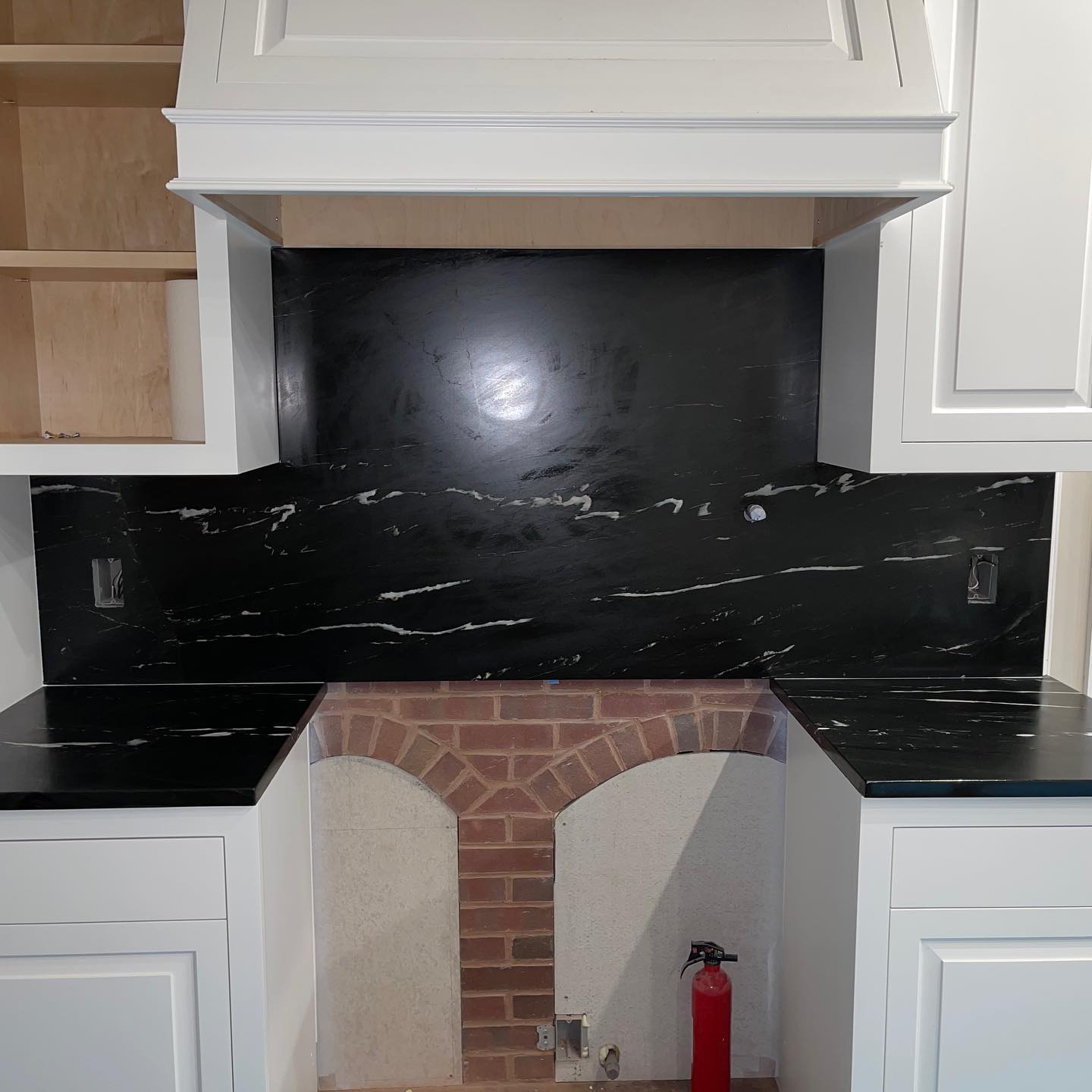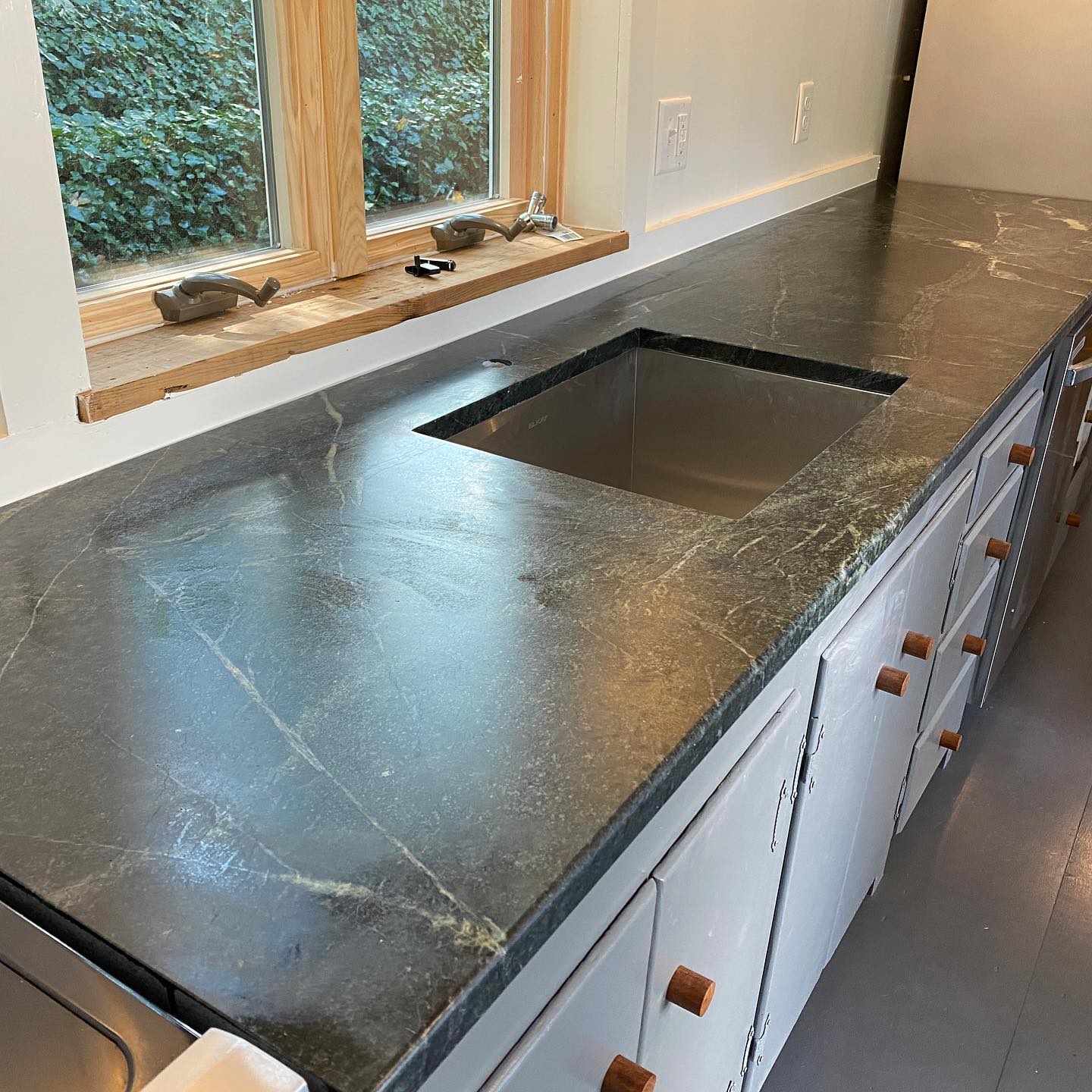What is Soapstone?
What is Soapstone?
Soapstone is a metamorphosed, easily worked igneous stone characterized by a “soapy” feeling when touched. Colors range from dark gray to bluish or greenish gray. Its heat retention qualities make it an ideal cladding for freestanding coal or wood-fired room heaters. Soapstone is also chemical, stain and weather-resistant, and is useful for sinks and laboratory tops.
Common Uses for Soapstone
Common Uses for Soapstone
Soapstone used for kitchen countertops, for sinks and bathroom tops, fireplace facings & inner hearths, as well as general building purposes.
Our Recent Soapstone Projects
Surface Care & Precautions
Surface Care & Precautions
Soapstone is primarily comprised of talc, giving it its soft look and feel. The Architectural grade of Soapstone (non-porous and ideal for kitchen countertop use) is generally darker and has a talc content of 30%-50%. Artistic Soapstone is classified by its softness, with a talc content of greater than 60%, making it perfect for carving and sculpture. Architectural Soapstone does vary somewhat in the shade of the material, and you have some flexibility in determining the final look of your kitchen countertop.
To achieve the darker look (deep charcoal-black), all that is needed is mineral oil, which you can purchase at your local drugstore or supermarket. Just rub it into the stone and remove any excess that sits on the surface, repeating this process several times until you reach the level of darkness desired. The darker color will help to hide minor scratches that typically occur with normal use. The other option is to not do a thing! You can keep the natural look of the soapstone by simply washing your countertops with water. If left untreated, Soapstone will naturally achieve a slightly darkened patina after years of use.








